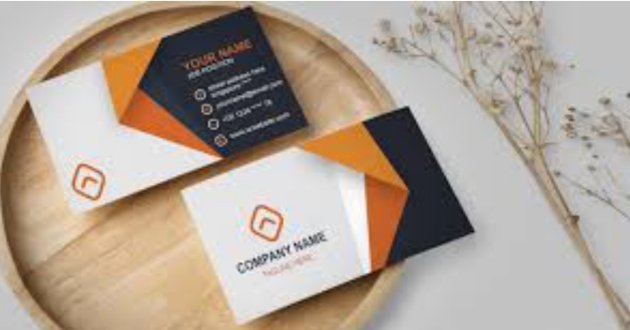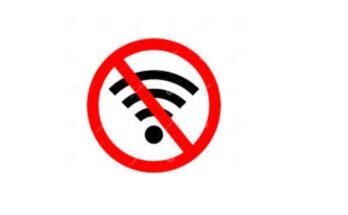Business cards maker apk
In an era dominated by digital communication and online networking, business cards may seem outdated to some. However, these small pieces of cardstock continue to hold immense value in professional settings. Business cards are not just a way to share contact information—they are a reflection of your brand, professionalism, and networking prowess. In this article, we’ll explore the enduring relevance of business cards, their essential components, design tips, and why every professional should carry one.
What is a Business Card?, Definition and Purpose
A business card is a small, printed card that typically includes a person’s name, job title, company name, and contact information. It serves as a convenient and tangible way to exchange details during formal or informal encounters. The primary purpose of a business card is to create a lasting impression and facilitate future communication.
Unlike emails or digital profiles, a business card can be physically handed over during a conversation, making it more personal and memorable. It provides a snapshot of your brand identity and leaves behind a tangible reminder of your interaction.
The History of Business Cards, From Calling Cards to Corporate Identity
The origins of business cards date back to 15th-century China, where “visiting cards” were used by the elite to announce their arrival. In 17th-century Europe, “calling cards” became popular among the aristocracy. By the 19th century, these evolved into trade cards, which were used by merchants to advertise their businesses.
As the industrial revolution progressed, so did the business card. It became a professional staple, helping individuals and companies establish their identity and credibility. Despite changes in technology and communication, the core function of business cards—to convey personal and business information—has remained unchanged.
Why Business Cards Still Matter, Despite Digital Advances
In today’s tech-savvy world, networking apps and QR codes are common tools. However, business cards continue to be relevant for several reasons:
- Tangible Connection: Exchanging a card involves physical interaction, which is more personal than a digital connection.
- First Impressions: A well-designed card reflects your professionalism and attention to detail.
- Accessibility: Not everyone has access to smartphones or Wi-Fi during meetings or conferences.
- Cultural Significance: In many cultures, exchanging business cards is a formal ritual that symbolizes respect and professionalism.
These cards bridge the gap between traditional networking and modern business practices, ensuring that important contacts are remembered and valued.
Essential Elements of a Business Card, What to Include
A professional business card should include the following essential details:
- Full Name: Your first and last name, clearly displayed.
- Job Title: Your role within the organization.
- Company Name: The name of your business or employer.
- Contact Information: Phone number, email address, and optionally, a physical address.
- Website or Social Media Handles: If relevant, especially for freelancers and digital professionals.
- Logo and Branding: A company logo, color scheme, and font that align with your brand identity.
These elements must be neatly arranged to avoid clutter and ensure the card is easy to read.
Designing Your Business Card, Key Considerations
Design plays a crucial role in how your business card is perceived. A poorly designed card can be off-putting, while a clean, well-structured card speaks volumes about your professionalism.
1. Choose the Right Layout and Size
The standard size of a business card is 3.5 x 2 inches. While some opt for square or vertical cards to stand out, the traditional size fits easily into wallets and cardholders.
2. Use High-Quality Materials
The quality of paper or card stock affects the feel and durability of your card. Choose a thicker card (typically 300-400gsm) for a premium touch. Matte, gloss, or textured finishes can add sophistication.
3. Prioritize Readability
Choose fonts that are easy to read and use appropriate font sizes. Avoid overly decorative fonts or colors that make the text hard to see.
4. Incorporate Branding Elements
Your business card should reflect your brand personality. Use consistent colors, logos, and design elements that align with your website or other marketing materials.
5. Consider Special Effects
Foil stamping, embossing, spot UV, and die-cut shapes can add flair. However, use these sparingly to avoid overwhelming the design.
Types of Business Cards, Choosing the Right Style
Depending on your profession and personal style, you can choose from several types of business cards:
1. Standard Business Cards
These are traditional cards with basic contact details and are suitable for most industries.
2. Premium Business Cards
Made with high-quality materials and finishes, these convey a sense of luxury and professionalism.
3. Folded Business Cards
These offer more space for information and are useful for professionals with extensive details to share.
4. Die-Cut Business Cards
Custom-shaped cards that stand out visually and physically from standard cards.
5. Digital Business Cards
These contain QR codes or NFC technology that direct people to a digital profile or website.
Choose a type that matches your brand, profession, and the impression you want to leave.
Business Cards for Different Professions, Customizing for Impact
Business cards should be tailored to suit the nature of your work. Here’s how different professionals might approach their cards:
- Creative Professionals: Graphic designers, artists, and photographers often use visually striking cards to showcase their style.
- Corporate Executives: Prefer sleek, minimal designs with formal fonts and subtle branding.
- Freelancers and Consultants: Might include portfolios, websites, or QR codes for easy access to work samples.
- Healthcare Professionals: Typically use clear, informative designs with emphasis on contact and specialty.
A custom approach ensures your business card speaks directly to your industry audience.
The Psychology of Business Cards, Making a Memorable Impression
The way people feel when they receive your business card can affect how they remember you. Consider these psychological factors:
- Color Psychology: Blue conveys trust, red denotes passion, and black suggests sophistication.
- Tactile Sensation: A thicker card with a soft-touch finish feels more premium and memorable.
- Visual Hierarchy: Emphasizing key details through size and placement helps guide the reader’s attention.
Understanding the psychological impact can help you design a card that leaves a positive, lasting impression.
Etiquette for Exchanging Business Cards, Do’s and Don’ts
Business card exchanges are a form of professional etiquette, especially in international settings. Here are some best practices:
Do:
- Always carry multiple cards.
- Offer the card with both hands in formal settings (e.g., Japan, Korea).
- Take a moment to examine the card you receive before putting it away.
Don’t:
- Give out damaged or dirty cards.
- Write on someone’s card in front of them.
- Toss the card aside without acknowledgment.
Being respectful during the exchange reflects cultural awareness and courtesy.
Using Business Cards Strategically, Networking and Branding
A business card is more than just contact information—it’s a marketing tool. Use it to:
- Start Conversations: An eye-catching design can spark interest.
- Reinforce Branding: Consistency with your website, LinkedIn, or portfolio builds brand recognition.
- Drive Traffic: Include QR codes that link to your work or sign-up pages.
Think of your card as a silent ambassador that continues working for you even after the meeting is over.
Digital Enhancements to Traditional Cards, The Best of Both Worlds
Combining physical cards with digital tools offers enhanced connectivity. Here are a few ways to integrate technology:
- QR Codes: Directs recipients to your website, video introduction, or LinkedIn.
- AR Integration: Augmented reality cards can show 3D models, product demos, or interactive content.
- Smart Cards: NFC-enabled cards let others tap their phone to instantly receive your contact information.
Such innovations make traditional business cards more versatile and interactive.
Common Mistakes to Avoid, Keeping it Professional
Many people unknowingly make mistakes that reduce the effectiveness of their business cards. Avoid these pitfalls:
- Overcrowding: Don’t cram too much information; leave enough white space.
- Poor Print Quality: Low-resolution logos or fonts can look unprofessional.
- Outdated Information: Always ensure your details are current.
- Unclear Branding: Use consistent visuals to strengthen your brand identity.
A well-maintained business card shows that you care about the details, which builds trust.
Cost and Printing Options, Budgeting for Quality
Business card pricing varies based on quantity, material, and print features. Here’s what to consider:
- Basic Cards: Affordable and ideal for bulk distribution.
- Premium Cards: Higher cost but better for impactful first impressions.
- Online vs. Local Printers: Online services offer convenience and deals; local printers may provide better personalization and faster service.
Invest in a good design and print, as this small investment can yield significant professional returns.
Future Trends in Business Cards, What’s Next?
As technology evolves, so will business cards. Some future trends include:
- Eco-Friendly Cards: Recycled materials and plantable cards are gaining popularity.
- Digital-Only Cards: Virtual cards shared via apps or NFC chips.
- AI Integration: Cards that link to AI-powered digital assistants or portfolios.
- Personalized Designs: Data-driven customization for individual recipients.
These trends indicate that business cards will continue to evolve, rather than disappear.
Conclusion, Why Business Cards Are Here to Stay
In conclusion, business cards remain a powerful tool in the world of networking and branding. Despite technological advancements, they offer a unique blend of personal touch and professional utility. A thoughtfully designed business card communicates credibility, leaves a strong impression, and opens doors to new opportunities.



